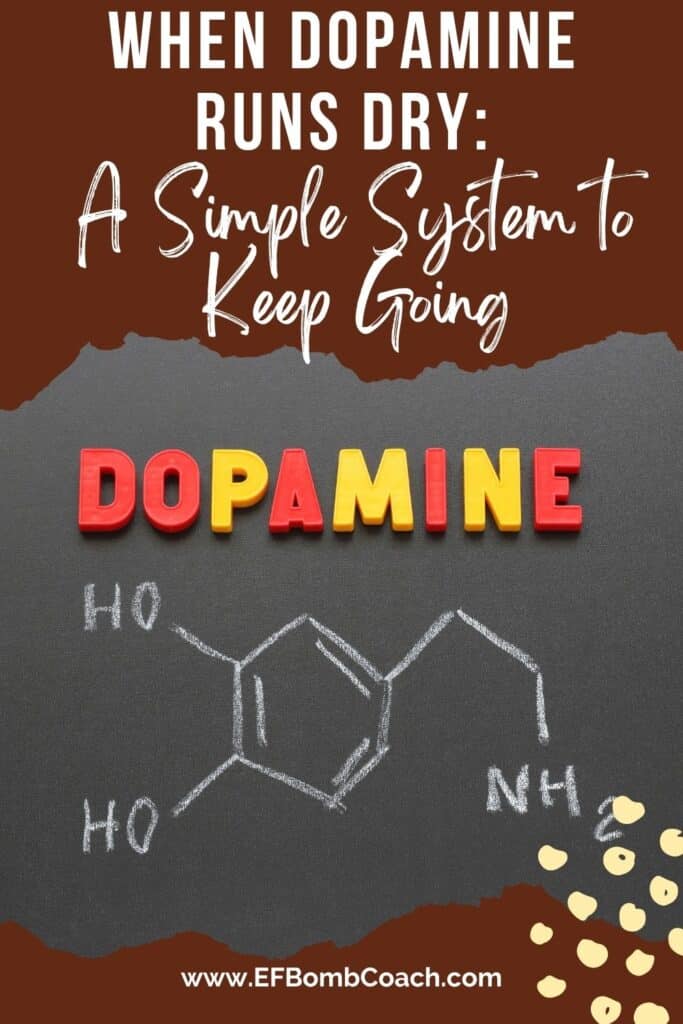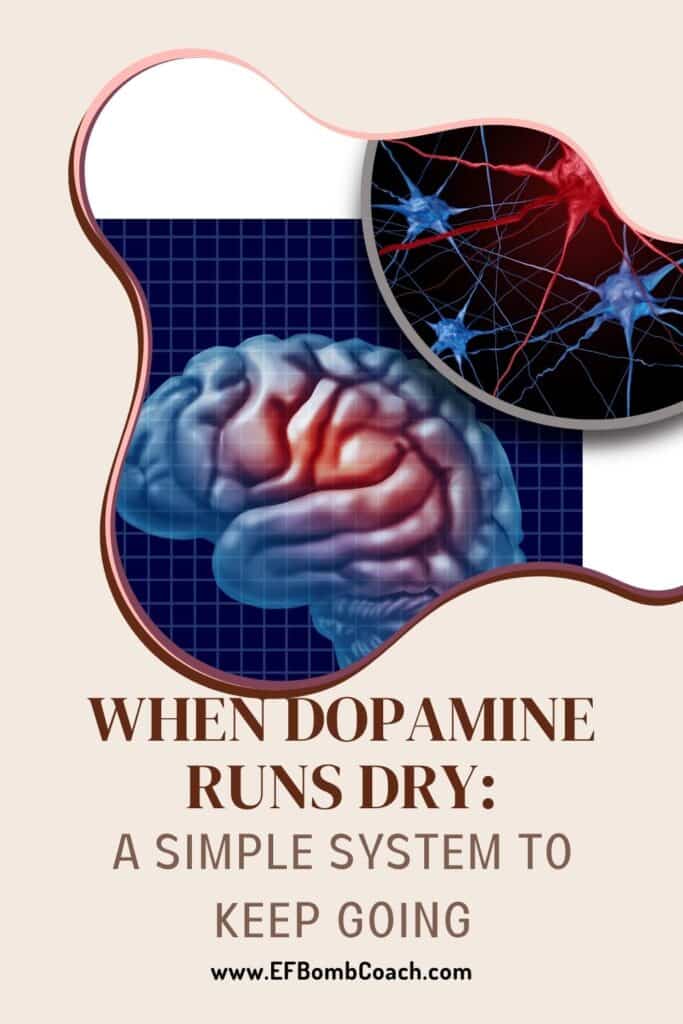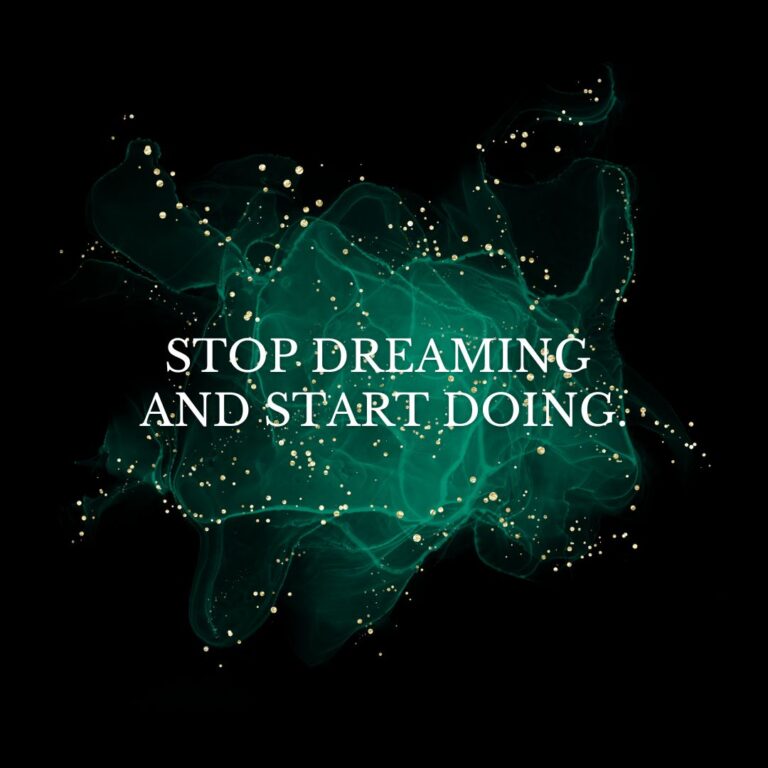When Dopamine Runs Dry: A Simple System to Keep Going
You start the day ready to crush it, then the buzz fades and your list suddenly feels heavy. Nothing is wrong with you. Your brain is just asking for a different approach.
You don't need more motivation. What you need is a system. In this guide, you’ll learn a simple, ADHD-friendly toolkit that keeps you moving when dopamine dips, so your business grows even on low-energy days.
Understanding Low Dopamine Days in Your Business
Dopamine affects how motivated you feel, but you can’t always control when it shows up. That’s why waiting for motivation keeps you stuck. Your brain likes progress. Once it sees movement, it wants more of it.
A typical day goes like this. You sit down pumped and ready, then the buzz drops and tasks stall. This isn't laziness. It’s a cue to switch strategies.
Create a toolkit built for your brain. It should be simple, repeatable, and forgiving on days when your tank is low. The right system will help you:
- Keep momentum, even with tiny steps
- Build progress you can see
- Avoid burnout by working with your energy, not against it

The Core Principle: Action First, Motivation Second
Stop waiting for motivation. It rarely comes first. When you take a small action, momentum builds. Then your brain notices the win and serves up motivation because progress feels good. You want to do more because something moved. Your brain says, “Ooh, that's cool. I like that.”
Start small and start now. The 3-minute ignition plan gives you a friction-free start line.
The 3-Minute Ignition Plan
120-Second Reset
Calm your body so your brain can get on board.
- Stand up and take a drink of water.
- Breathe in for 4, breathe out for 6, twice.
- If you prefer, use five-finger breathing or box breathing.
Two minutes is enough to reset your system and signal, we’re safe, we can start.
60-Second Setup
Make starting easy and obvious.
- Clear a dinner-plate-sized space.
- Open one tab or one tool. Only one.
- Say out loud, “I am only starting, not finishing.”
Big projects feel impossible when you think about the whole thing. Starting is the win. Keep the pressure off and start small and start now.
This quick ignition gets you over the start line without the weight of perfection.
Implementing the 10-3-1 Flow for Work Blocks
Use this simple structure on low-dopamine days. It gives you quick wins, focused progress, and a short reset so you can keep going without draining your battery.
10-Minute Warm-Up
Do tiny, low-stress tasks that require no heavy thinking. You’re just moving your hands and collecting wins.
- Clear junk from your inbox
- Do simple filing
- Tidy your desktop or folder structure
- Sort a small stack of papers
Keep it easy. If organizing your to-do list is stressful, skip it here.
Three Focus Sprints
Now you move the work that matters, in short, focused bursts. Think Pomodoro, but customized for your brain.
- Choose your block length, 20 minutes on and 10 off, or 15 and 10 if 20 is too long.
- Work straight through on one task only.
- Take the break, then repeat three times.
Give each sprint your full attention. One task, one outcome. You will see the needle move.
One-Minute Review
Close the block with a quick check-in.
- What moved?
- What did you finish?
- What is the next tiny step?
- What’s the simplest version you can do next?
Focus on minimum viable progress. Send the ugly draft. Aim for one testable outcome per sprint. Done beats perfect.

Creating a Dopamine Menu for Quick Resets
Have a printed list ready for when you feel flat. You want quick hits that reset your system without stealing your day. Keep it visible, near your desk or on your wall.
Ideas for your dopamine menu:
- Play your favorite song
- Light a candle you love
- Sip a favorite coffee or tea
- Two minutes of stretching
- Step outside and feel the sun
Skip doom scrolling and “just five minutes” of videos. Those eat time. Your menu should reset you fast so you can return to the task with a little more gas.
Ongoing Strategies to Stay on Track
These tools make your day smoother and keep you honest without beating yourself up.
Body Doubling for Accountability
Sometimes you just need someone “in the room.” Try:
- Virtual co-working like Focusmate or Flown
- A quick text to a business buddy, “Focusing 20 minutes on invoices now.”
Keep the check-ins simple. Keep the tasks small. The presence alone helps you stay with it.
Designing Your Space to Reduce Friction
Set up your space so it nudges you into the right task and keeps distractions out.
- Put your phone in another room, or at least put the charger across the room.
- Use different positions or chairs for different work. Change your seat to change your state.
- If possible, split work across devices. For example, admin on your laptop, creative work on your desktop.
- Separate locations by purpose. Work at your desk, pleasure reading on the couch.
- Pre-open what you need for tomorrow before you end today. Sales page to build tomorrow? Open the editor now.
These tiny moves make starting easier. They also gate the noise before it gets you.
Gating Noise and Protecting Focus
Guardrails help you do what you said you would do.
- Use site blockers during sprints
- Turn off notifications
- Label calendar blocks with meaning, like “Revenue first” or “Client care”
- Keep your why in view during focus blocks
These tools are not judgments. They are supports.
Making Progress Visible
Your brain celebrates what it can see. Give it proof.
- Use a Kanban board with three columns, To Do, Doing, Done, and move sticky notes across
- Use Trello if you prefer digital
- Cross items off your list as you go
- Keep a daily Done list, only wins, no “didn’t do” items
When your brain sees finished items, it delivers more dopamine. That keeps you moving.

Did you know I have a membership for women who want to improve their executive function skills? Check it out here.
Overcoming Task Initiation Hurdles
There will be days when you just can’t start, even when you want to. Use the hard-to-start protocol to shrink the task until it feels silly-easy.
Break It Down to Tiny Steps
Make the first step so small it feels almost pointless. That’s the point. You’re building a bridge to begin.
Example, invoicing:
- Turn on the computer.
- Open QuickBooks.
- Open Invoices.
- Type the client name.
You can walk away after any single step. When you come back, it’s easier to keep going because you’ve already started. Stop while it still feels easy. If you hate invoicing and you do two, stop. Your brain remembers, that wasn’t so bad, which makes coming back less painful.
Using Novelty Without Chaos
Your brain loves new. Feed that, without blowing up your schedule.
- Change location for a sprint, move to the patio or a different room
- Switch your soundtrack for the day
- Try dictation instead of typing, or use text-to-voice to listen instead of read
- Use theme days, for example, Tuesday is customer outreach day. Theme days reduce decision load and add variety. Tuesday feels different from Monday on purpose.

Energy-Based Scheduling and Pairing Tasks
Most schedules were built for neurotypical brains. ADHD energy rises and falls all day. Work with that, not against it.
Guard Your Peak Energy
Find your strongest 90 minutes each day and protect it. That is your power window. Put your hard tasks and money moves there. It might not be at 9 a.m. Track for a week and notice when you feel sharp. Guard that block with your life.
Pair Boring Tasks with Pleasures
Make boring tasks easier by pairing them with something you like.
- Your favorite tea while emailing
- A playlist while filing
- A candle while you write
You’re telling your brain, this might not be fun, but it comes with something good.
End-of-Day Shutdown
Take three minutes to close the loop so tomorrow is lighter.
- Capture what you finished in your Done list.
- Pre-open the first tool or file for tomorrow’s priority.
- Clear your dinner-plate workspace.
End clean so you can start clean.
Bouncing Back from Stalls
Even with good systems, you’ll stall out sometimes. The win is in how fast you recover.
Name It and Reset
Say out loud, “I’m switched off.” No judgment. It’s data. Then pick one quick reset.
- Short walk
- Cold water on your wrists
- Text your body double buddy
- Two minutes of breathing
After the reset, start with your 10-minute warm-up task. Get quick wins to restart momentum.
Reschedule and Reward
If you still can’t move, reschedule the task into tomorrow’s power window. Protect your best energy for what matters most.
Build tiny rewards you actually want. Use honest micro-rewards after each sprint, then a slightly bigger treat after three sprints.
Ideas:
- Five minutes in the sun
- A favorite latte
- A short podcast walk
Keep your rewards visible in your planner or on your wall so your brain has something to reach for.
Weekly CEO Hour for Long-Term Wins
Pick one hour each week that never moves. During that time, you run your business on purpose.
- Review revenue and promises you made.
- Spot bottlenecks and decide how to clear them.
- Choose your three moves for next week.
- Preload the first steps into your planner.
This routine cuts decision fatigue and keeps your focus on what actually moves the business.
Quick Start Challenge
Try the 10-3-1 flow today. Keep it simple and keep it moving.
- Pick one money move.
- Do a 3-minute ignition, reset and setup.
- Warm up for 10 minutes with tiny tasks.
- Run three focus sprints with breaks.
- Do a 1-minute review, log your win, and define the next tiny step.
Low dopamine days don’t get to decide your progress. A simple, repeatable system does. Start tiny, focus in short sprints, and make visible progress your fuel. Guard your best energy, reset fast when you stall, and reward honest effort. Your brain will follow your moves. Keep going.










